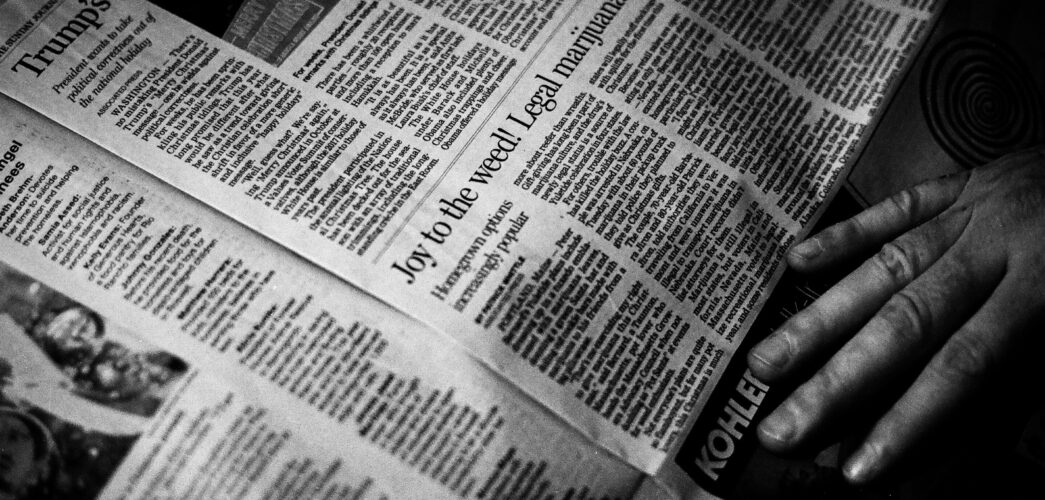Why newspaper design and the architecture of a newspaper still matters (and what happens to your product when you disregard it)
It’s easy (and cheaper) to ditch newspaper design, but be warned doing so could cost you dear in the long run – and here’s why.
Like any other profession, newspaper journalists have their own technical language. And newspapers themselves also have their own ‘architecture’ (or at least they did).
When it came to newspaper design and editorial thinking we were always told – though I never knew the science behind it – that right hand pages (or the odd numbered ones) were more important news wise than left hand ones because that is where a reader’s eye would be drawn to first.
You can still see that thinking in evidence now if you turn to a national newspaper – pages 3,5, 7, 9, 11 were traditionally your more ‘newsy’ stories and your lighter stories (with the exception of your page 3 human interest story) would be on the left hand pages.
But all of this thinking on newspaper design costs time and money – you needed editors, sub-editors, designers to make it happen, but then technology came along to change that.
Does Newspaper design matter anymore?
In the local press most of that thinking has gone out of the window with the widespread adoption of a templated page layouts. Now the main criteria is ‘will the words and images fit the shape’.
Whereas a news editor would have spent a long time wondering whether to place a story on 5 or 7 or even 13 or 15 or perhaps at the ‘back of the book’ after the centre spreads don’t be surprised if you find strong news stories tucked away with no regard to their news worthiness.
Templates are also the reason why stories are now over written, and illustrated with photographs the like of which you would probably think twice about sharing on your own social media pages.
It’s no-one’s fault per se, apart from the executives who have allowed the wilful dismantling of their own product – but rather the demands of the machine which seeks to minimise the production costs and time of newspapers in favour of online output.
It’s also why you will probably read a story in print (if you bother that is) several days after it has appeared online.
But then instead of newspaper design if you want your people to fill the boxes – don’t be surprised if they fill boxes!
The automation of the news editing and design process also means that whereas a good editor would have ‘grouped’ stories together you will often now see stories on related topics scattered across the newspapers marooned from each other.
And that is because newspaper managers have lost sight of their greatest assets – the judgement of editors who would think about these things and join the dots.
But don’t give up, there is still hope!
Editors have become an unaffordable luxury – but as with any business there was a reason that they existed in the first place, and once you forget that you forget about what you are there for.
But that newspaper architecture was one of the pillars which helped newspapers achieve commercial success – that real people cared about the product and would do their upmost each day and each edition to try and improve upon what went before.
Thinking about the daily structure and design of your newspaper may seem like a luxury but actually it was a crucial part of what made the product so well-loved – time and thought had gone into it.
You can see now that in most cases that kind of craft and TLC about the overall product is largely absent and it shows.
Readers are no fools either, they will be aware that the attention to detail is now gone
You don’t have to be a business genius to know that if you stop caring about your product, then your customers will stop caring about it too – and will be another reason for them to stop investing in it, both as paying readers and advocates of its role in the local conversation.
And for PRs that will be a Godsend as they know that most of their efforts are likely to be cut and paste verbatim into the spaces (though if I were them, I’d be wary about gloating too much because their fate depends just as much on newspapers too)
But what does any of this matter in the online world – if newspapers are to disappear then doesn’t it make sense to wind them down (and keep hold of the revenue) while you can?
The only problem about this is the mindset. A good editor’s mindset was about continuous improvement and that culture filtered down into the reporters and the rest of the staff. It was fixated firstly on getting the story right rather than the pressures of filling the space and delivering the latest update.
In fact, the architecture was linked to the ‘brain’ of the newspaper – forget that and you forget your brain, but you also undermine your own organisational culture.
In short you remove the pillars which justify your own existence and facilitate the destruction of your own product.

